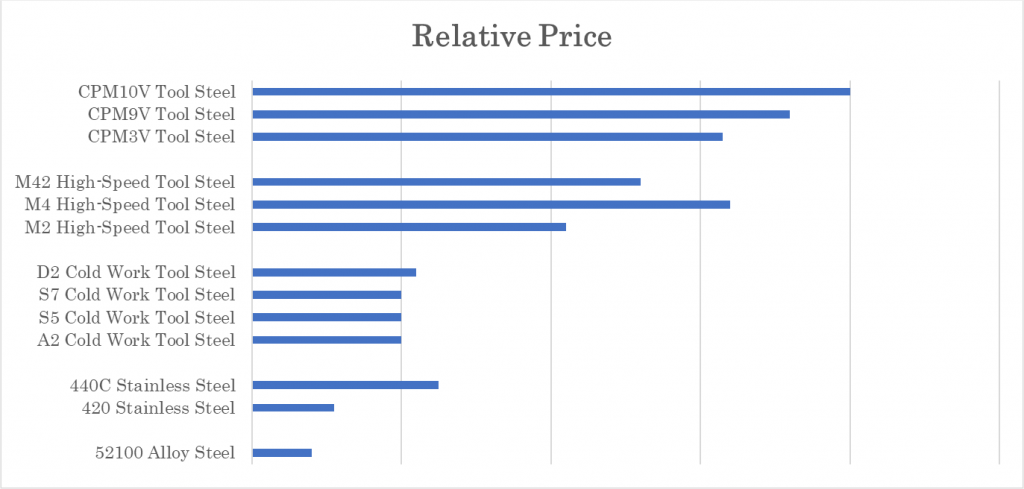Relative Properties Comparison Charts
Wear Resistance / Edge Retention
Wear Resistance is the ability of material to resist being abraded or eroded by contact with work material, other tools, or outside influences (scale, grit, etc.) Wear resistance is provided by both the hardness level and the chemistry of the tool. We often intuitively expect that a harder tool will resist wear better than a softer tool. However, different grades, used at the same hardness, provide varying wear resistance. For instance, A2, D2, and M2 would be expected to show increasingly longer wear performance, even if all were used at 60 HRC. In fact, in some situations, lower hardness, high alloy grades may outwear higher hardness, lower alloy grades. Thus, factors other than hardness must contribute to wear properties. Because of their high hardness, vanadium carbides are particularly beneficial for wear resistance. When present in significant amounts, vanadium carbides tend to dominate other types in affecting wear properties. For instance, M4 high speed steel’s chemical content is nearly identical to M2 high speed steel, except M4 contains 4% vanadium instead of 2%. Despite the high levels of molybdenum and tungsten carbides (about 6% tungsten, 5% molybdenum) in each grade, the small difference in vanadium content gives M4 nearly twice the wear life of M2 in many environments. (Crucible Tool Steel and Specialty Alloy Selector)
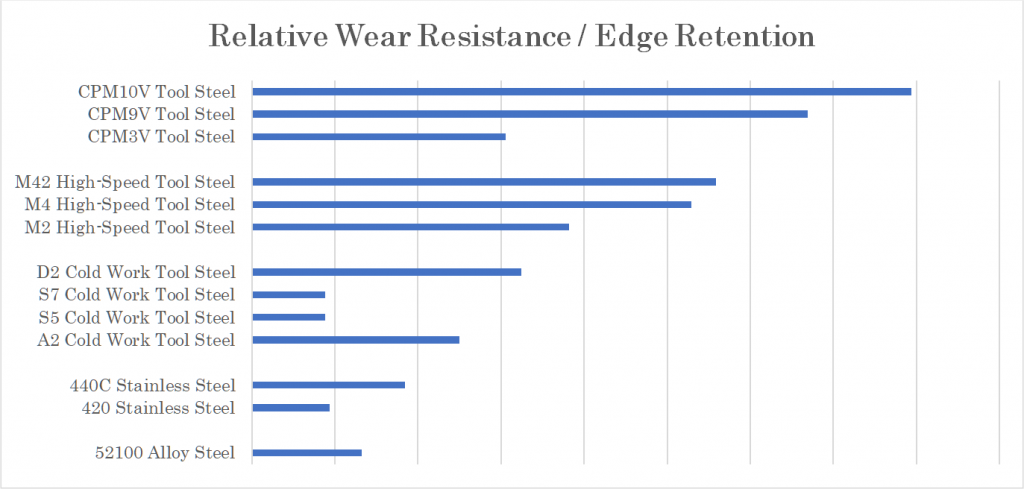
Shock Resistance / Toughness
Toughness, as considered for tooling materials, is the relative resistance of a material to breakage, chipping, or cracking under impact or stress. Toughness may be thought of as the opposite of brittleness. In service, wear failures are usually preferable to toughness failures (breakage). Breakage failures can be unpredictable, catastrophic, interruptive to production, and perhaps even a safety concern. Conversely, wear failures are usually gradual, and can be anticipated and planned for. Toughness data is useful to predict which steels may be more or less prone to chipping or breakage than other steels, but toughness data cannot predict the performance life of tools. (Crucible Tool Steel and Specialty Alloy Selector)
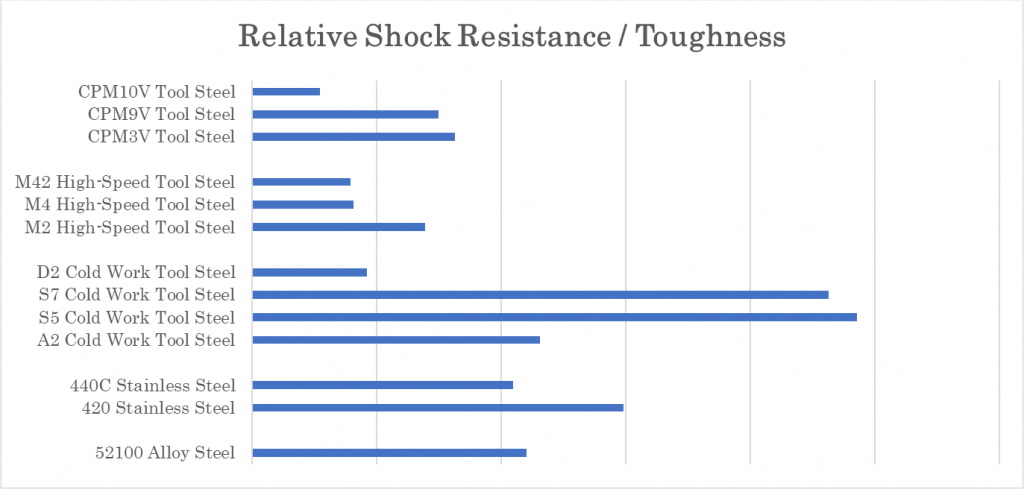
Corrosion Resistance
Corrosion Resistance is the capacity to hold the binding energy of a metal and withstand the deterioration and chemical breakdown that would otherwise occur when the material is exposed to oxidization or chemically reactive agents.
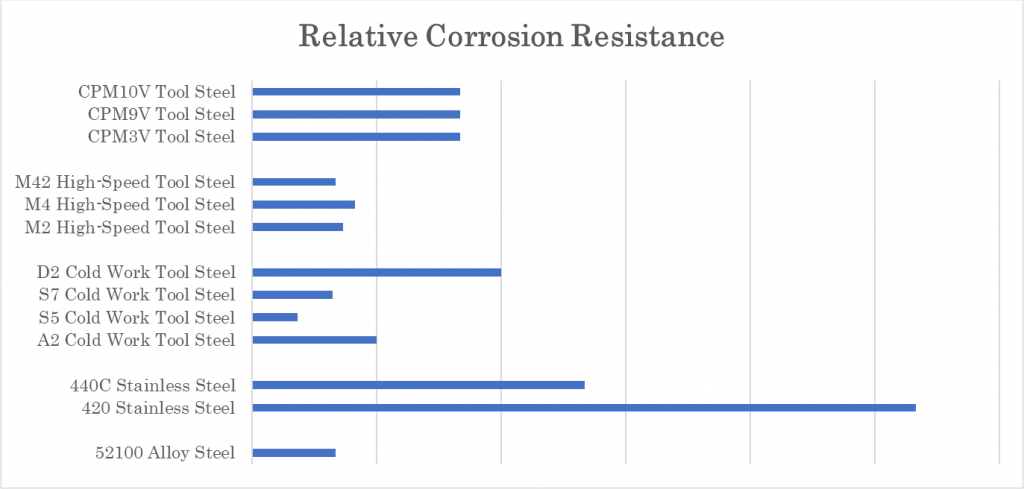
Hardness
Hardness is a measure of a steel’s resistance to deformation. Hardness in tool steels is most commonly measured using the Rockwell C test. Because a steel’s resistance to deformation is directly related to the hardness, not the grade, corrective actions for deformation may include increasing hardness or decreasing operational loads. Changing grades will not help a deformation problem unless the new grade is capable of higher hardness. Hardness is not usually a primary factor in wear resistance, only in deformation resistance. (Crucible Tool Steel and Specialty Alloy Selector)
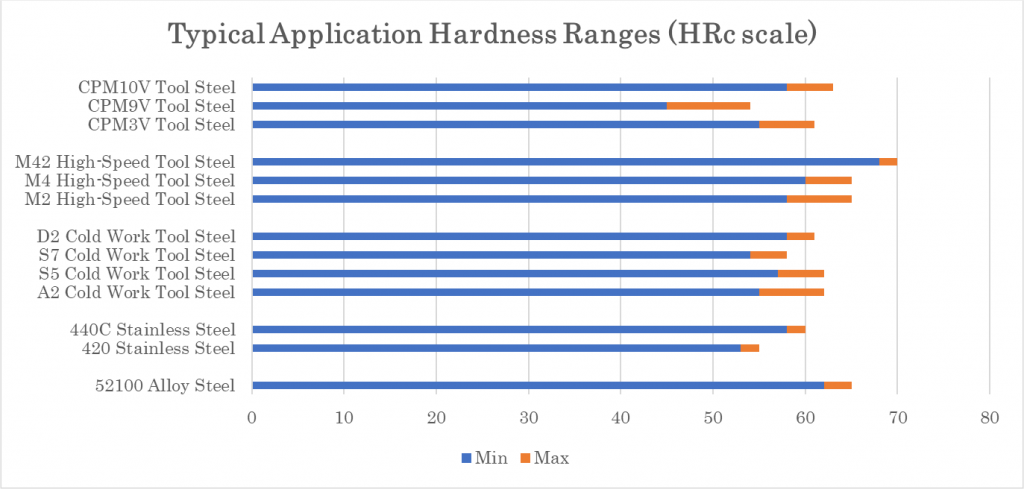
Hot Hardness
Hot Hardness is a measure of a steel’s ability to retain manufactured hardness properties at elevated operational temperatures generated by friction between the tool and the workpiece. Cobalt is an especially important compositional element in a steel’s Hot Hardness rating. (Hardness Testing at Elevated Temperatures: Bruker TMT)
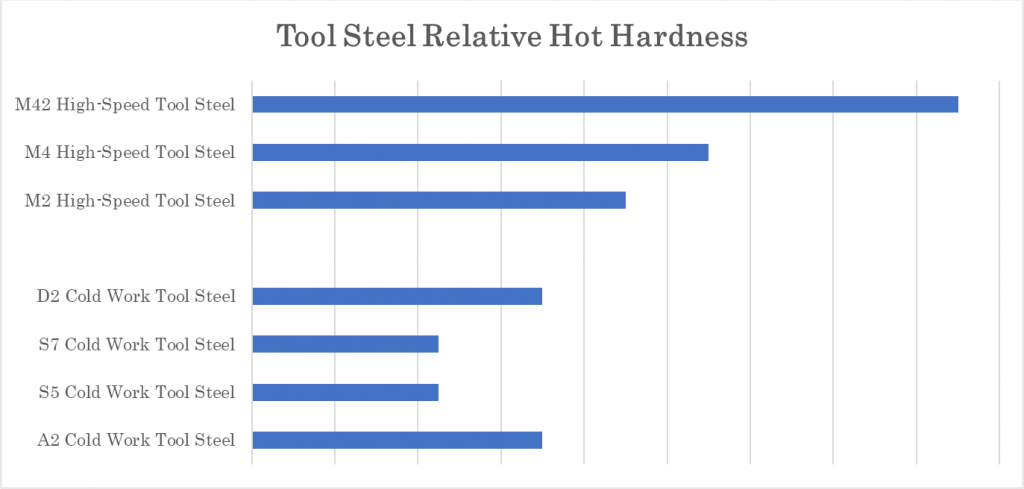
Machinability / Ease of Manufacture
Machinability / Ease of Manufacture, at least as displayed in the below chart, are general syntheses of material supplier data and Alcon observations and testing. It is a relative comparison chart attempting to convey the degree of general production challenges (whether that be consumption of tooling, specificity of heat treating, challenge of keeping flat) associated with each steel type.
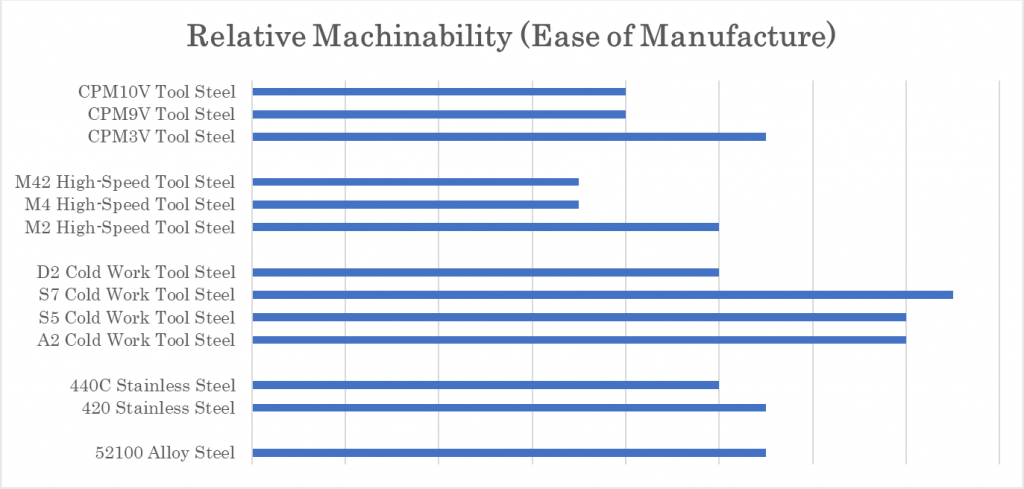
Typical Compositional Analysis
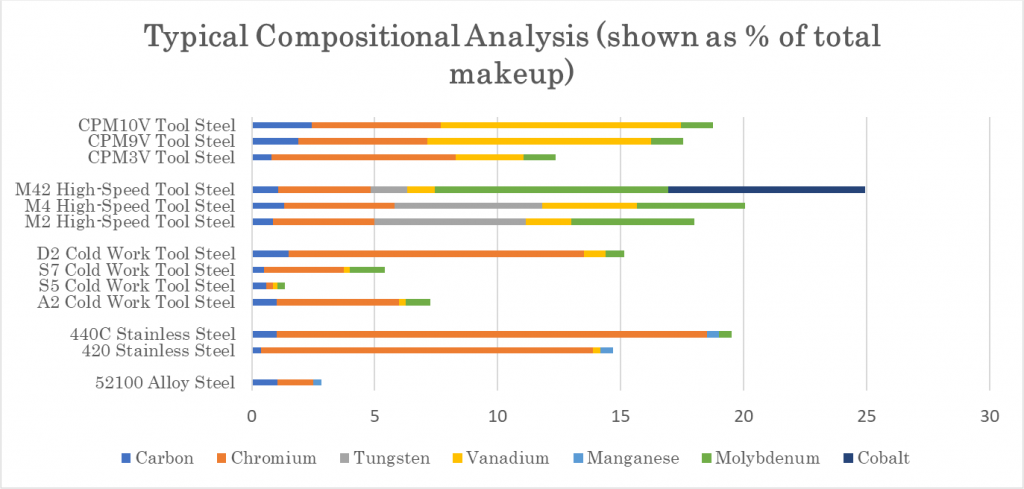
Relative Price
